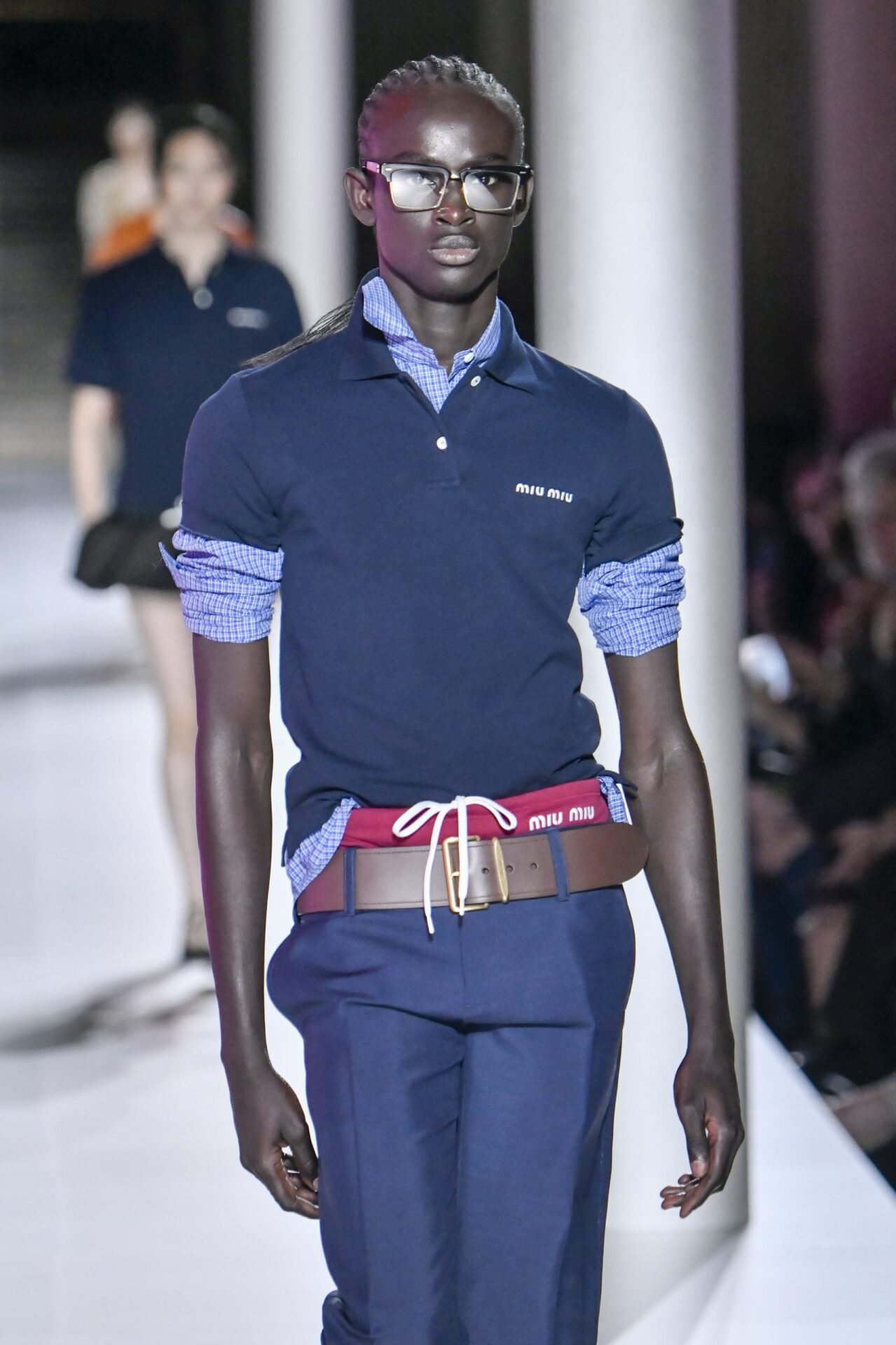 By Kerane Marcellus ·Updated August 29, 2024
By Kerane Marcellus ·Updated August 29, 2024
Sagging came to the fashion scene in the ‘80s and ‘90s as hip hop became an outlet for artists and listeners alike. The impressionable youth naturally wanted to embody their idols by adorning themselves in baggy clothing with their pants hanging below their waists. In 2021, Balenciaga released a $1,200 sweatpant with a boxer detail at the waist to mimic sagging. This incited outrage online after a TikTok video of the pants was shown in the store.
“I think my initial observations [on the sagging trend] was with celebrity culture in particular. White celebrities and even some models, like the Hailey Bieber types; that whole group that the media pushes over and over again,” said Julian Randall, writer and Black consumer studies Ph.D. candidate, “I had been forced to think about it more critically when Balenciaga sold those sagging sweatpants. All of the discourse around that was the first time that I had been confronted with it in ways that I hadn’t before,” he explained.
The brand is now known for its often controversial designs that are made to provoke a reaction or draw attention. Non-Black celebrities such as pop star Justin Bieber, Billie Eilish, and Troye Sivan are often seen sagging on other fronts. They have adoptedsrc=”https://www.essence.com/wp-content/uploads/2024/08/GettyImages-1715268903-scaled.jpg” alt=”Let’s Talk About It: Luxury Fashion’s Obsession With Sagging” width=”400″ height=”600″ /> Victor Virgile/Gamma-Rapho via Getty Images
The sagging trend has taken a new turn, with the illusion of wearing multiple pairs of pants or attached underwear now considered fashionable. Despite the Balenciaga controversy, brands such as Miu Miu, Hed Mayner and All-In have also adopted this trend. However, this has raised some concerns. To explore the growing interest in sagging, we delved into its history and interviewed experts on this previously significant phenomenon, which has become a microtrend.
According to the historian and author of Liberated Threads, Tanisha C. Ford, the trend of sagging seems to have started elusively. Sagging was often alluded to homosexuality in prison, yet this is a gray area in Ford’s opinion. On NPR, she stated, “I don’t think we can definitively say that sagging began in prisons.” Another specification of the trend comes from the author and fashion curator at the Cleveland Museum of Art, Darnell-Jamal Lisby, who suggests that it may have started in prison for other reasons. Baggy clothing uniforms and clothing were given to prisoners without belts to thwart suicide attempts. Prisoners were given baggy uniforms without belts to prevent suicide attempts, which some people believe is reminiscent of the practices of enslavers, who did the same to prevent enslaved people from escaping. This has led government officials to take action.
What is most upsetting about sagging being looked at as a trend on a broader scale outside of Blackness is that historically it only affected Black participants negatively. In 2007, Ocala, Florida council member Mary Sue Rich was so bothered by Black youth sagging that she got a law passed to fine young men wearing their pants too low of $500 or up to six months of jail time, according to NPR. This law was lifted in 2020 after 13 years in a county that is predominantly Black or African American. This comes as no surprise as the Black Lives Matter movement was on the rise in 2020 with the aim to make real change in the quality of life and safety of Black people in America. Other states had made similar bans from Wildwood, New Jersey, and Pikeville, Tennessee. “I was never in support of it, even as a resident,” Vice Mayor Chris Davis sponsored the repeal in Florida and told the Miami Herald. “I felt it disproportionately affected a certain segment of our population, which is young, African-American men.” Even President Barack Obama made a statement to MTV’s Sway in 2008, saying, “Brothers, pull up your pants.” However, he said that making laws regarding this trend was a “waste of time.”
 Victor Virgile/Gamma-Rapho via Getty Images
Victor Virgile/Gamma-Rapho via Getty Images
The respectability politics of sagging and the perspective of dressing like a thug or dangerously dressing was plaguing the Black community for decades. However, penalizing Black young men solely on their clothing was much more dangerous. Black consumer analyst and writer Julian Randall weighed in on the high fashion space co-opting sagging as problematic: “Historically, [brands have studied Black consumers] to a degree. For example, hip hop artists’ stylists couldn’t pull from European luxury fashion brands. They wouldn’t work with them because of these stereotypes about what rap and hip hop are. Eventually, once white male youth started adopting hip hoprel=”tag”>#fashionnews fashion politics sagging trend
The post Let’s Talk About It: Luxury Fashion’s Obsession With Sagging appeared first on Essence.
